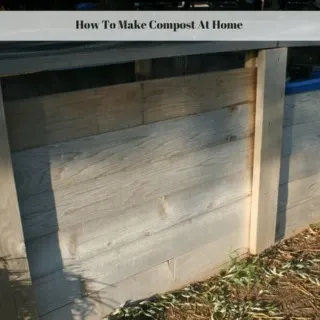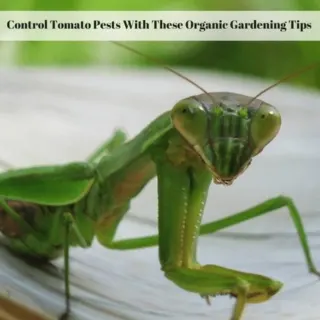If you've ever wondered what garden seeds to plant in June, you are not alone.
Mid-June is here and with it comes the heat of summer.
For many gardeners, the continual rain this year has interfered with getting their vegetables planted.
Do not fear if this is the case in your situation.
There is still time to get your vegetable crops planted, even if you are growing from seed.

Dealing With Wet Soil
If your soil is still too wet to till, do not fear.
Raised beds can be a good answer here.
If you don’t have materials, and do not wish to buy materials to make raised beds, try laying newspaper on top of the ground and piling soil on top of that.
Containers are another option.
Many plants will grow in a variety of containers from hanging baskets to window boxes or even five-gallon buckets.
Fill your container with compost that is broken down or a potting soil mix meant for container gardening.
Remember that raised beds and containers will dry out faster than the ground, so make sure they are in an area where you have easy access to water.

What Garden Seeds To Plant In June
The third week of June is a good time for Mid-West gardeners to plant warm season crops such as corn, cucumbers, tomatoes, watermelon and green beans.
For those who intend to garden late into fall, or even year-round, plant Swiss chard, Brussels sprouts, lettuce, broccoli and cabbage.
Don’t be afraid to plant some flowers from seed during this time as well.
Calendula and stocks are good choices for flowers that will do well when cool weather arrives.
Before the end of the month, be sure to get your fall potatoes and parsley planted.

Vegetable Plants Or Garden Seeds To Plant In June
Many crops are easy to grow from garden seed.
If you are getting a late start on planting your vegetable garden, it is important to know whether to start with seeds or plants.
It is also important to read the labels on both seeds and plants to make sure you choose ones that will have enough time to produce in your area.
To calculate this information, you will need to know what the first expected fall frost date is, then count the days backwards to see how many frost-free days you have left in this gardening season.
Look for short season crops such as those that produce in 45 to 72 days, especially if you are starting with seed.
Crops such as corn, cucumbers, watermelon and green beans are good choices to grow from seed.
This late in the season, crops such as tomatoes may not have enough time to grow from seed, so choose young plants.
To get your crops producing faster, look for plants that are already flowering or have small tomatoes on them.
These plants will transplant just fine and you will be eating fresh, ripe tomatoes in no time at all.
Be sure to keep a garden journal so you know which varieties of plants you chose, when to expect the first harvest and how late into the season you were able to harvest.
Take note of things such as how well the plants did once the weather began cooling down and if you are using cold frames or frost covers come fall how well the plants did with protection.
By keeping track of this information now, you will be better prepared to choose the best garden plants for your area next year.
Planting Your Garden
How Much To Plant In Your Garden
This article will help you figure out how much to plant in your garden depending on your family's size and whether you want to preserve the food or not.
When to Plant in Spring: Early Season Garden Tips
Know when to plant in spring by using these early garden season tips. These tips will allow you to get a head start on your vegetable garden.
Benefits Of Container Gardening During Changeable Weather Conditions
Changeable weather conditions certainly impacts gardeners who wish to grow their plants in the ground, but there is a solution. Learn about the benefits of container gardening and how it can help gardeners deal with climate change!
How To Grow Tomatoes
Learn how to grow tomatoes and how to plant tomatoes in a garden. Growing great tomatoes is easy if you follow a few simple steps.
Mastering Sweet Potato Gardening: How to Plant Sweet Potato Plants
Unlock the secrets of successful gardening with our guide on how to plant sweet potato plants for a bountiful harvest!
Gardening Tips For Beginners
These gardening tips for beginners will help you get your first garden started right. Tips on gardening planning, caring for bareroot plants and more.
How To Garden In Winter Indoors And Outdoors
Learn how to garden in winter indoors and outdoors. There are many vegetables and herbs that don't mind the cold or thrive in containers.
How To Make Compost At Home
Learn how to make compost at home using materials you already have on hand and are likely to throw into the trash and send to the local landfill.
Control Tomato Pests With These Organic Gardening Tips
These organic gardening tips for controlling pests on tomato plants help you identify, control and get rid of the problem without the use of organic pesticides in most cases.
How To Combat Blossom End Rot
Wondering what to do about tomatoes with brown spots on the bottom of them? Learn how to combat blossom end rot, a common problem many gardeners encounter.
Save Money! Harvest Free Vegetables Year-Round In Any Climate!
Garden tips for beginners - and advanced gardeners alike - that are sure to help save money. These gardening tips are about more than just plant care!
Vegetable Growing Realities: More Than Economic Benefits
When it comes to the facts of vegetable growing realities, there are more reasons than just the economic benefits for doing it.
Outsmart Frost in Spring Vegetable Gardens
Understanding how to outsmart frost in spring vegetable gardens leads to earlier harvests, less plant damage and a longer growing season.
Greenhouse And Coldframe Garden Structure Ideas
Learn about tunnel houses, greenhouses and cold frame garden structures as well as how they are used to grow plants outdoors year round.
Vegetable Garden Tips And Ideas For Using Artificial Grass
If you're looking for vegetable garden tips and ideas that incorporate the use of artificial grass, look no further! Weed prevention, pest control and environmental benefits. If you're looking for vegetable garden tips and ideas that incorporate the use of artificial grass, look no further! Weed prevention, pest control and environmental benefits.
10 Easiest Vegetables to Grow from Seed
Learn about the 10 easiest vegetables to grow from seed. Not only are there some unique heirloom varieties, but they are tasty too!
Extend the Spring Vegetable Garden
Learn how to extend the spring vegetable garden into summer, fall or even winter by using various shading and covering techniques.
Survival Food Garden: Grow Vegetables For Disaster Preparedness
A survival food garden is a great thing to have even if you don't believe the zombie apocalypse is coming.
Peanuts Are Exotic Plants: Growing vegetables such as peanuts can make your garden unique
It is possible to learn how to grow peanuts even if you don't live in a warm climate. Peanuts are exotic plants that are fun to grow.
Plant A Row For The Hungry: Feed The Hungry By Donating Extra Garden Produce
Plant A Row For The Hungry encourages gardeners to plant extra vegetables and donate them to their local food pantries to help those in need.
Eat Better, Save Money By Growing A Garden
Learn how you can eat better and save money by growing a garden right in your own backyard or even on your balcony!
Sheri Ann Richerson
Growing organically is important because the produce is healthier and contains more nutrients.
It is better for the environment, insects and birds, plus there is no concern about the potential issues with GMO’s.
It is also environmentally friendly and helps reduce your carbon footprint, not to mention saves money.
Plus there is the holistic perspective of growing an organic garden because from the soil to the food we eat, it is all interconnected.
In this course you will learn:
How to build healthy organic soil
When to plant seeds or established plants as well as when to direct sow
How to simplify garden maintenance
Natural methods of pest control
























